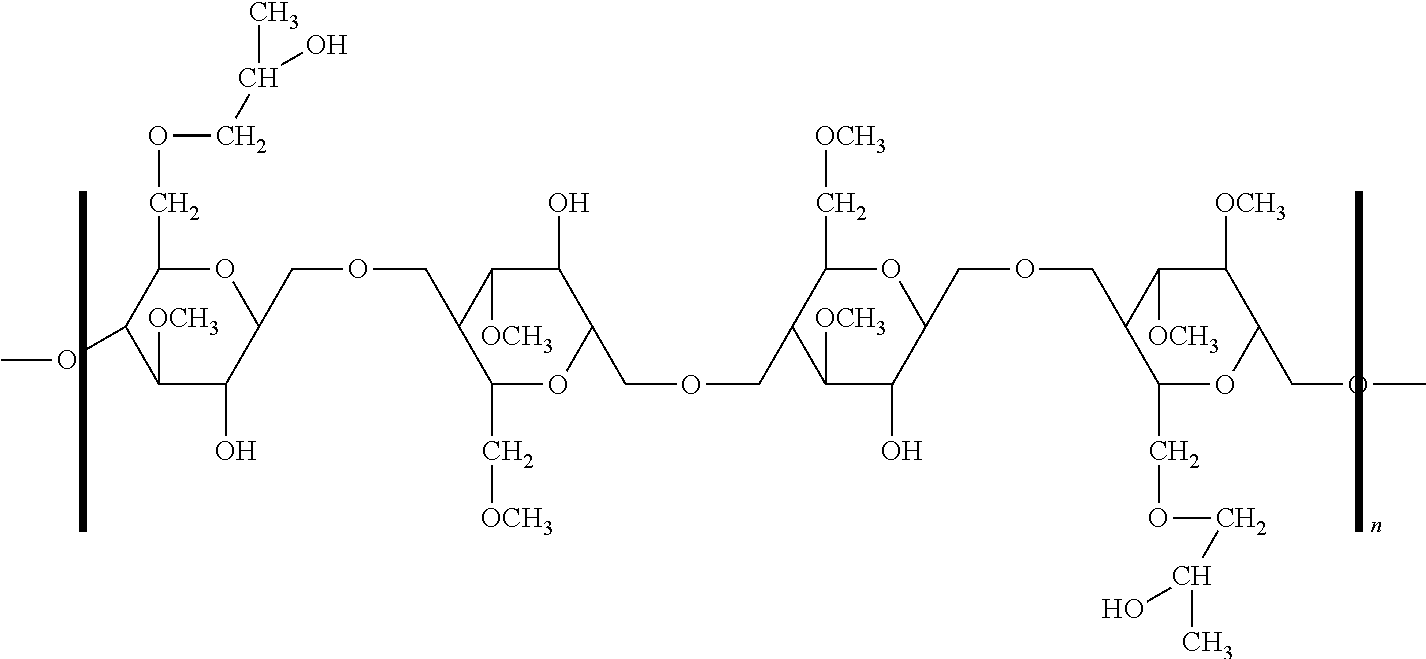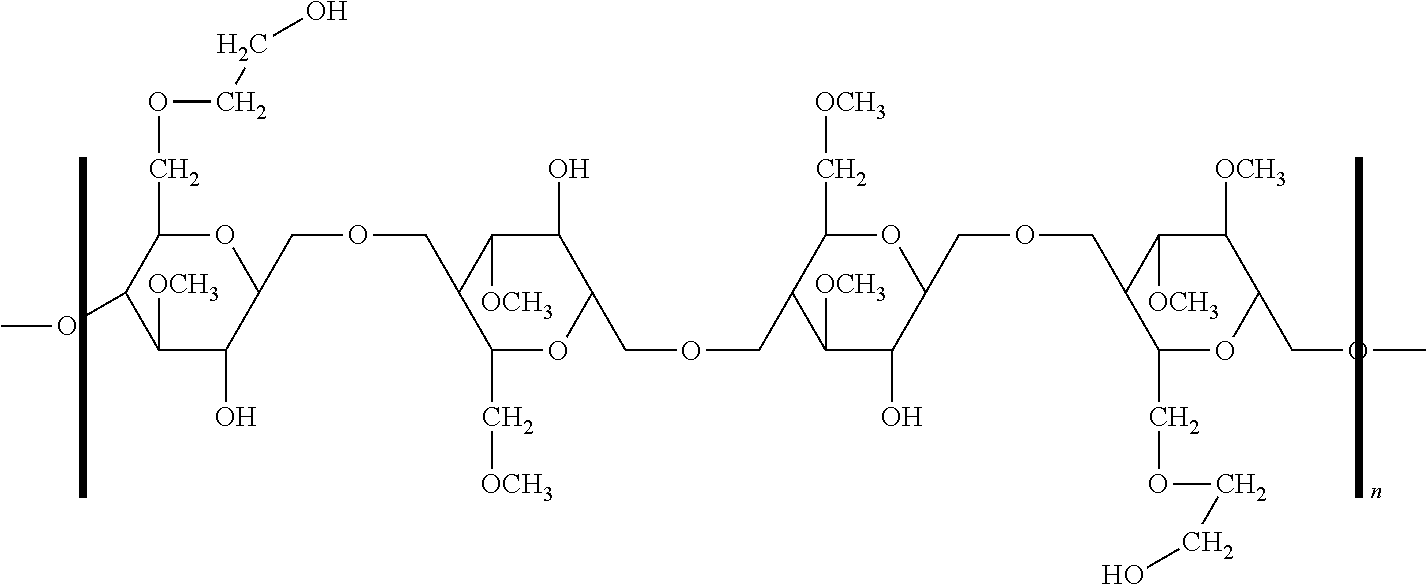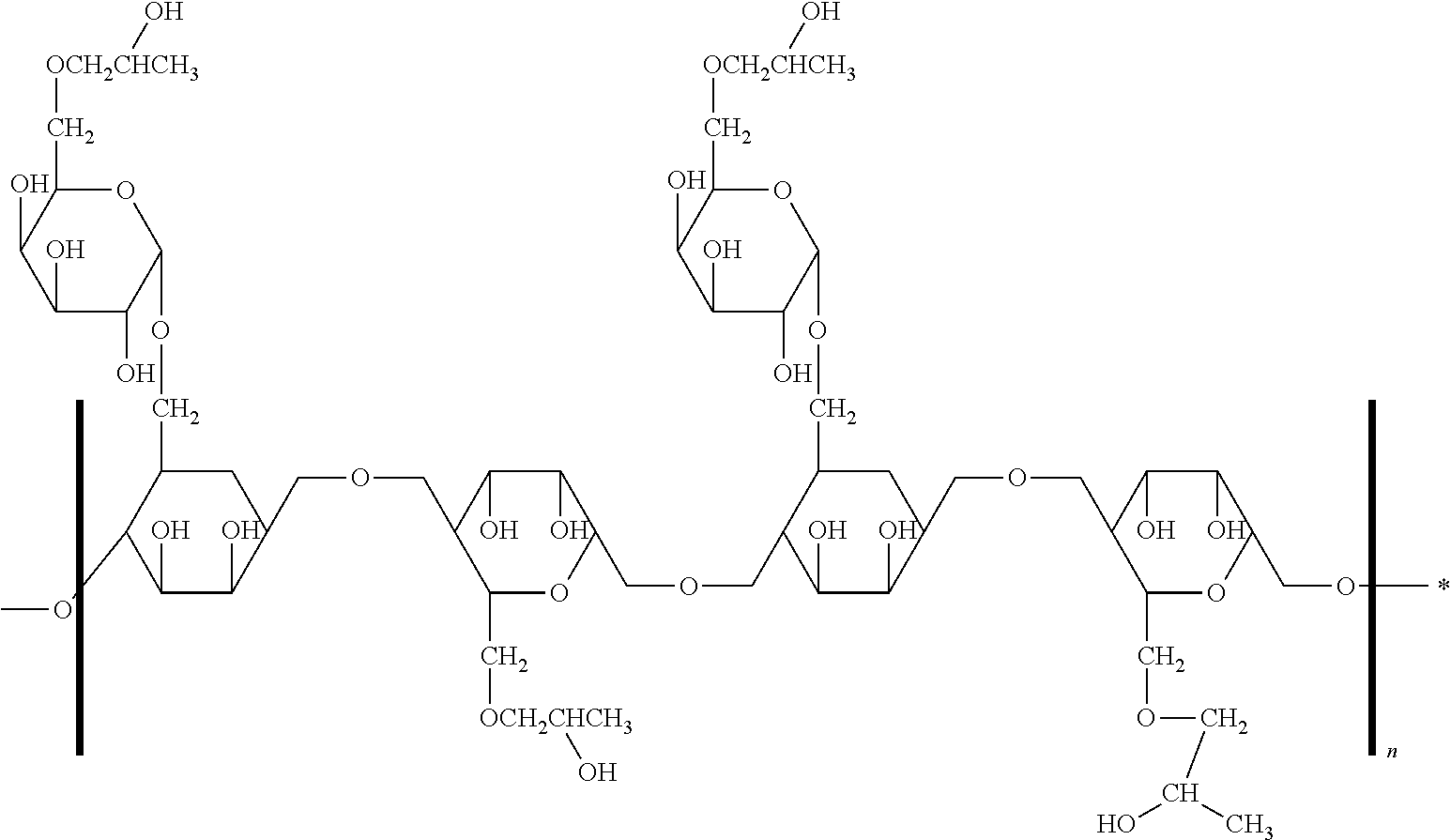Benefit agent delivery particles comprising non-ionic polysaccharides
a technology of non-ionic polysaccharides and beneficial agents, which is applied in the direction of detergent compounding agents, hair cosmetics, deodrants, etc., can solve the problems of poor performance of deposition aids on polyester, inability to correct properties, and modified polysaccharides, for example hydroxyl-ethylcellulos
- Summary
- Abstract
- Description
- Claims
- Application Information
AI Technical Summary
Benefits of technology
Problems solved by technology
Method used
Image
Examples
example 1
Deposition Performance of Particles on Fabrics
[0257]1-Ethyl-3-(3-dimethylaminopropyl) carbodiimide hydrogen chloride (EDAC) was obtained from Alfa Aesor and all other chemicals obtained from Sinopharm Chemical Reagent Co., Ltd.
a) Synthesis of Carboxyl Functional Polystyrene Particle (3.6 μm)
[0258]Carboxyl-functionalized polystyrene particles were synthesized via dispersion copolymerization. 500 mL three neck flask was charged with 140 mL ethanol and 12.0 mL DI water containing 38.0 g styrene, 1.4 g acrylic acid and 3.0 g poly (N-vinylprrolidiene). A nitrogen blanket and stirring rate of 500 rpm were maintained. This solution was deoxygenated by bubbling with nitrogen for 1.0 hr. After thorough deoxygenation, the temperature was increased to 70° C. and 6.0 g AIBN added to this solution. The reaction was kept at 70° C. for 20 hrs. After being cooled to room temperature, the latex was centrifuged at 10000 rpm for 15 minutes and the supernatant decanted off. The latex particles were re-...
example 10
Deposition of Particles on Cotton
[0271]The following results were obtained when the latex particles of example 10 were deposited on cotton;
Material &GraftDep.Dep.SupplierViscMw[a]washrinseOriginal particle———52.4%43.9%(no delivery aid)HPMC (DAIDO) ———82.8%66.9%(Sangelose)HPMC (Ashland)-218,300——86.0%64.6%K200M(2%, 25° C.)MC (TCI) M01853500-5600351k —82.4%61.1%(2%, 20° C.)[b]Hydroxyethyl 19001559k —72.5%65.7%Cellulose[b](Ashland) 250HR(2%, 20° C.)HEMC (TCI)20-4080k 60%78.4%65.5%M0322(2%, 20° C.)[b]HPG gum 56505335k 68%70.2%59.6%(Ashland) (1%, 25° C.)[b]HP40s[a] feed ratio of polysaccharide to PS particle is 0.05;[b] Lab analysis results
[0272]The table below shows some consolidated results for Example 10 and 11, in which the deposition percentage is recorded after the rinse for both polyester and cotton. It can be seen that particles according to the present invention (those using HPMC, MC and HMC) show excellent deposition on both polyester and cotton, but that a comparative example ...
example 11
Surface Attachment of HEMC onto Perfume Encapsulates Via Melamine Formaldehyde Shell Formation
[0273]The pre-formed melamine formaldehyde perfume encapsulates were 15 micron in size and obtained from Givaudan Limited. The particle solids were 41.6 wt % and perfume solids were 28.0 wt % respectively. The hydroxyethyl methyl cellulose (HEMC) grade utilised was Walocel MW 40000 PFV supplied by Dow Wolf Cellulosics.
[0274]The following procedure outlines the synthetic modification to attach HEMC to the surface via the formation of additional melamine formaldehyde (MF) shell:
a) Pre-Polymer Preparation
[0275]To a 100 ml conical flask was add 19.5 g formalin (37 wt % aqueous formaldehyde) and 44.0 g water. The pH of the solution was adjusted to 8.9 using 0.3 g of 5 wt % aqueous sodium carbonate. 10 g of melamine and 0.64 g of sodium chloride were added and the mixture stirred for 10 minutes at room temperature. The mixture was heated to 65° C. and stirred until it became clear. This mixture i...
PUM
| Property | Measurement | Unit |
|---|---|---|
| size | aaaaa | aaaaa |
| size | aaaaa | aaaaa |
| viscosity | aaaaa | aaaaa |
Abstract
Description
Claims
Application Information
 Login to View More
Login to View More - R&D
- Intellectual Property
- Life Sciences
- Materials
- Tech Scout
- Unparalleled Data Quality
- Higher Quality Content
- 60% Fewer Hallucinations
Browse by: Latest US Patents, China's latest patents, Technical Efficacy Thesaurus, Application Domain, Technology Topic, Popular Technical Reports.
© 2025 PatSnap. All rights reserved.Legal|Privacy policy|Modern Slavery Act Transparency Statement|Sitemap|About US| Contact US: help@patsnap.com



